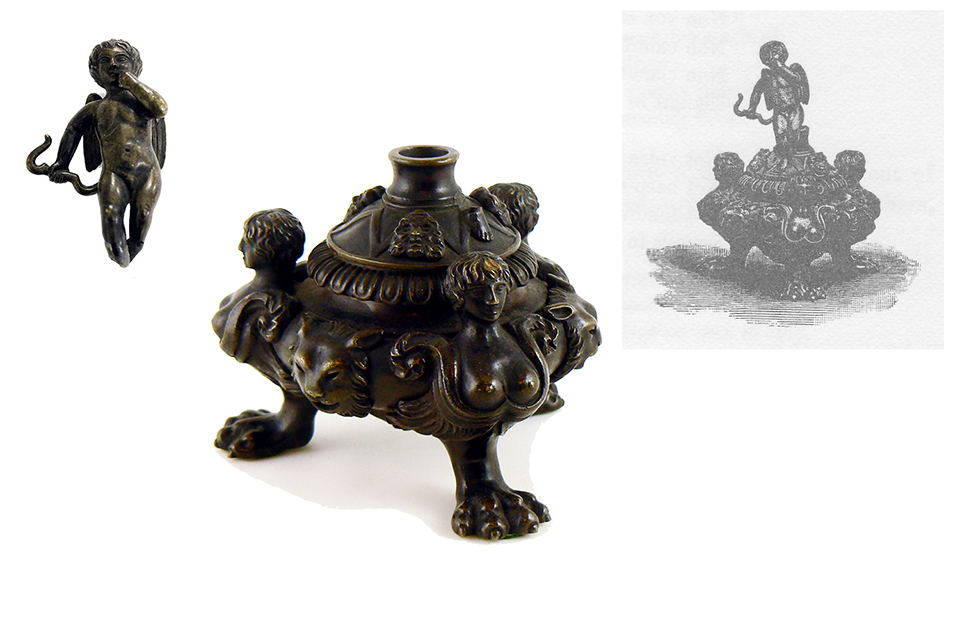 The bronze inkwell shown above has a long and convoluted history of ownership. It originally belonged to George Crabbe, an English surgeon, poet, novelist and chaplain who died in 1832. After Crabbe’s death, one of his sons gave the inkwell to Irish poet and balladeer Thomas Moore. Moore died in 1852, at which point his widow passed the inkwell on to Samuel Carter Hall, a prominent 19th century Irish literary critic, and admirer of Henry Wadsworth Longfellow. In an 1872 letter to Longfellow, Hall wrote that he planned to send him the inkwell, but not just yet as “Mrs. Hall uses it daily; but I shall bequeath it to you.” Mrs. Hall died in 1881, so presumably the inkwell was in Longfellow’s possession for only a short time, as he passed away in 1882.
The bronze inkwell shown above has a long and convoluted history of ownership. It originally belonged to George Crabbe, an English surgeon, poet, novelist and chaplain who died in 1832. After Crabbe’s death, one of his sons gave the inkwell to Irish poet and balladeer Thomas Moore. Moore died in 1852, at which point his widow passed the inkwell on to Samuel Carter Hall, a prominent 19th century Irish literary critic, and admirer of Henry Wadsworth Longfellow. In an 1872 letter to Longfellow, Hall wrote that he planned to send him the inkwell, but not just yet as “Mrs. Hall uses it daily; but I shall bequeath it to you.” Mrs. Hall died in 1881, so presumably the inkwell was in Longfellow’s possession for only a short time, as he passed away in 1882.The inkwell has remained on Longfellow’s study table ever since, but its story didn’t end with its arrival there. Sometime between 1920-1940, the bronze cherub figurine on its top was broken off and lost. In 2017, Longfellow House staff received a message from someone claiming that their relative had been employed by the Longfellow House in the early 20th century as a cleaner, and that this woman had accidentally broken something from Henry W. Longfellow’s study and kept it. After receiving a photograph of the item, by using historic photographs and a 19th century sketch of the inkwell (also shown above) Longfellow curatorial staff were able to positively identify the piece as the missing element of the inkwell. It was soon donated to the park by the owner and will eventually be reattached to the inkwell by a conservator, making the piece whole again.
